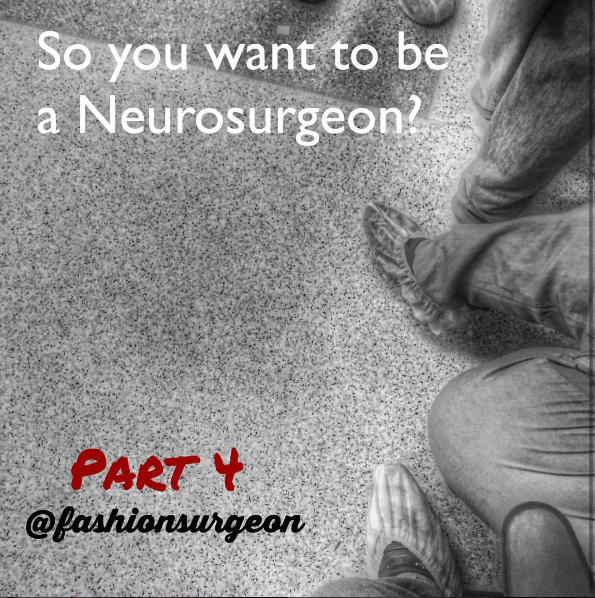So you want to be a neurosurgeon ? (part IV) By @fashionsurgeon
MORE: http://www.fashionsurgeon.com
I wanted to talk about how to get ready for what we called ” #pimping sessions” – where an attending or #resident asks you questions to test your knowledge. Some questions even the PGY-1 of 2 won’t know but what you will be expected to know is#neuroanatomy, common #neuroradiologyfindings (i.e. The differential dx for a ring enhancing lesion(s)) or normal anatomy on an MRI. .
.
.
Although they don’t expect you to know everything there are certain times when you can really shine – for instance when you know what case you are assigned to the night before! That’s when you can study – I always got the big picture by looking at Greenberg’s Handbook of Neurosurgery. I remember one of the first cases I got to study for a #retrosigmoid approach for decompression of the #trigeminalnerve. So I studied #trigeminalneuralgia first and what the indications for surgery were. Then I reviewed #rhoton‘s Operative atlas and went through the surgery. I didn’t know what I was reading to be honest but enough stuck that I got an A+ in my#intraoperative pimping session so I got to close ??. .
.
.
So before your first #clerkship begins I recommend reviewing your neuroanatomy, purchasing GreenBerg and getting to know the sections so you can quickly reference things before a case (it will fit in your pocket). Now there are also tons of apps – checkout @neurocirurgiabr he posted the top apps on his Instagram. Start memorizing basic #neuro facts, like what is the most common brain tumor, most common location for a brain aneurysm. You can’t learn it all, just be as prepared as you can be and be a knowledge sponge when you have someone teaching you. Don’t listen to those people who say they read Greenberg 5 times, if they actually did what a waste. Books can’t substitute from learning from hands on experience. .

